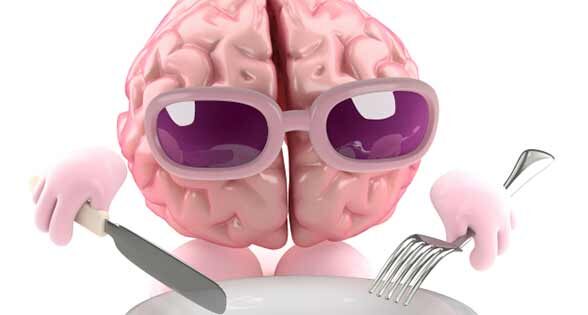Deep inside the brains of people with dementia and Lou Gehrig’s disease, globs of abnormal protein gum up the inner workings of brain cells – dooming them to an early death.
But boosting those cells’ natural ability to clean up those clogs might hold the key to better treatment for such conditions.
That’s the key finding of new research from a University of Michigan Medical School physician scientist and his colleagues in California and the United Kingdom. They recently reported their findings in the journal Nature Chemical Biology.
Though the team showed the effect worked in animals and human neurons from stem cells, not patients, their discoveries point the way to find new medicines that boost the protein-clearing cleanup process.
The work also shows how an innovative microscope technique can help researchers see what’s going on inside brain cells, as they labor to clear out the protein buildup.
Hot topic
The researchers focused on a crucial cell-cleaning process called autophagy – a hot topic in basic medical research these days, as scientists discover its important role in many conditions. In autophagy, cells bundle unwanted materials up, break them down and push the waste products out.

In brain cells that were made from stem cells derived from ALS patients, treatment with two drugs that stimulate autophagy led to longer cell survival (middle two lines).
In the newly published research, the team showed how the self-cleaning capacity of some brain cells gets overwhelmed if the cells make too much of an abnormal protein called TDP43. They found that cells vary greatly in how quickly their autophagy capacity gets swamped.
But they also showed how three drugs that boost autophagy – speeding up the clean-out process – could keep the brain cells alive longer.
Longer-living, TDP43-clearing brain cells are theoretically what people with Lou Gehrig’s disease (amyotrophic lateral sclerosis or ALS) and certain forms of dementia (called frontotemporal) need. But only further research will show for sure.
Sami Barmada, MD/PhD, the U-M neurologist and scientist who is first author of the new study, says the new findings are encouraging – and so is the success of a microscope technique used in the research. His new lab, in the U-M Department of Neurology, is continuing to refine ways to view the inner workings of nerve cells.
“Using this new visualization technique, we could truly see how the protein was being cleared, and therefore which compounds could enhance the pace of clearance and shorten the half-life of TDP43 inside cells,” he says. “This allowed us to see that increased autophagy was directly related to improved cell survival.”
Barmada worked on the team at the Gladstone Institutes and the University of California San Francisco, headed by Steven Finkbeiner, MD/PhD, that published the new findings. The team used stem cells derived from the cells of people who have ALS to grow neurons and astrocytes – the two types of brain cell most crucial to normal brain function.
Because he both sees patients in clinic and studies neurological disease in the laboratory, Barmada brings a special perspective to the research.
At U-M, he specializes in treating patients who have neurological diseases that affect both thinking and muscle control. About a third of ALS patients develop signs of frontotemporal dementia, also called FTD – and about 10 percent of people with FTD also have a motor neuron disease that affects their brain’s ability to control muscle movement.
One of the drugs tested in the study, an antipsychotic drug developed in the 1960s to treat people with schizophrenia, had actually shown some anti-dementia promise in human ALS patients, but comes with many side effects. Barmada notes that Finkbeiner’s team at the Gladstone Institute is already working to identify other compounds that could produce the effect with fewer side effects.
Interestingly, small studies have suggested that people with schizophrenia who take antipsychotic drugs are much less likely to develop ALS.
Looking to the future
Barmada’s work at U-M now focuses on the connection between brain cells’ ability to clear abnormal proteins. He also studies the cells’ regulation of RNA molecules created as part of expressing protein-encoding genes. Looking further upstream in the protein-producing process could yield further clues to why disease develops and what can be done about it, he says.
The research was sponsored by Barmada’s National Institutes of Neurological Disorders and Stroke grant NS072233, as well as Finkbeiner’s grants (NS039074, NS083390, NS081844 and NS07837), by the ALS Association, the Robert Packard Center for ALS Research, the William H. Adams Foundation, and Target ALS. In addition to Barmada and Finkbeiner, the research team included Andrey Tsvetkov, Arpana Arjun, Andreas Serio, and Siddharthan Chandran, as well as others. Daniel Peisach, MD/PhD, formerly a member of Barmada’s U-M lab, is a co-author.
Barmada also receives funding from the U-M Medical School’s Protein Folding Disorders Initiative, part of the school’s Strategic Research Initiative.
Reference: Nature Chemical Biology (2014) doi:10.1038/nchembio.1563
This story is reprinted courtesy of the University of Michigan Health System.





Yonghee Stevens
Would Alzheimer’s Disease benefit from the drugs that are being studied?
Reply
Sami Barmada
In theory, this strategy could also work for other dementias and neurodegenerative diseases, including Alzheimer’s, Parkinson’s, and Lewy body dementia. There’s quite a bit of work supporting this notion, and one reason we’re excited about the findings. A big question that remains is how best to stimulate autophagy in people without doing harm.
Reply
Deborah Holdship
Thank you for the added information, Dr. Barmada. People are very interested in this research. — Editor
Reply
Diana Smith - 1971
My husband (’70) has been diagnosed with Lewy Body Dementia. This development brings hope.
Reply
Sandra Corr - 1983
My grandmother had Alzheimer’s and I am working to avoid getting it. Does this finding have any implications in regards to this disease?
Reply